OMDURMAN The Last Battle of Horse Mounted Men (end)
You will be rewarded
Challenging commanders
And the cries of the wild tribes:
"What do you want, damn,
Why confuse minds?
Why bring us to the light
From the cute Egyptian Darkness! ”
(“White's Burden” by R. Kipling)
Everything will be as we want.
In case of misfortune,
We have a machine gun "Maxim",
They have no "Maxim".
(“The New Traveler” by H. Bellock)
By 1883, Mahdi managed to create a jihadi - a regular army of Islamists. The infantry units were largely recruited from the black slaves, who were recently liberated and converted to Islam. Also, the composition of the military units included the enemy soldiers who were able to capture them (in the government forces the private were staffed with slaves who were specially bought for these purposes). The main combat unit - the regiment, which consisted of five hundred, commanded by Amir. Each hundred consisted of five platoons, called mukaddami. Brigades were formed from the regiments, and corps from the brigades. In total, the army had three corps, each of which was headed by a caliph, one of the closest assistants to Mahdi. Banners of certain colors fluttered over each body: green, red and black. Also, separate tribes in the jihadia exhibited infantry and cavalry hundreds.
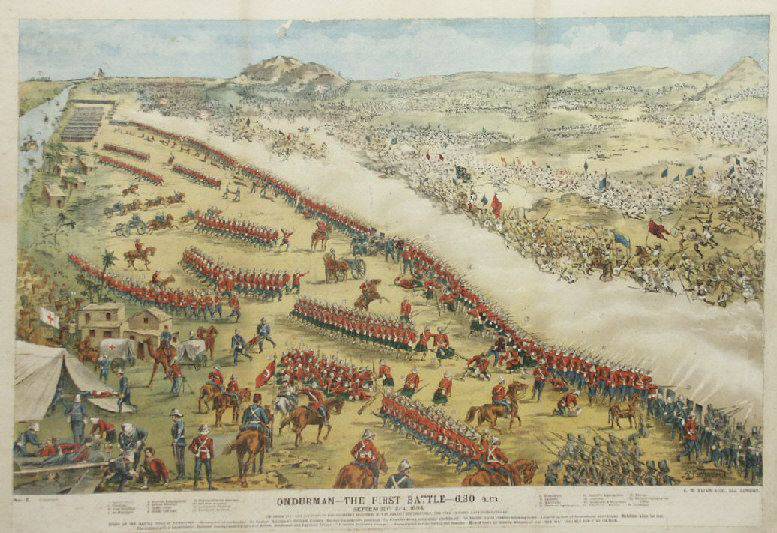
Battle of Omdurman. British illustration of the time.
In the meantime, there was an endless change of governors in Khartoum, although that didn’t really help. It became clear that the Ottoman-Egyptian authorities did not cope with the situation. Meanwhile, the British wanted to use the separation from Egypt of the greater part of Sudan in order to fully strengthen their power in this territory. The diplomats, through their own means, secured the withdrawal of the administration and the Egyptian troops from Sudan (the diplomats claimed that this was temporary). Egyptian troops were urgently replaced by troops from the British Empire. The head of the province was appointed JJ Gordon, who worked well in 1878 - 1879. during the suppression of the uprisings. Gordon has achieved extraordinary powers.
Battle of Omdurman. Chromolithograph A. Suterdenda.
Making a support for the old aristocracy, Gordon tried to cope with the Mahdists. He planned to create a vassal sultanate in Sudan that would be less dependent on Egypt and more dependent on Great Britain. To Mahdi himself, he proposed an area west of the White Nile - Kordofan. In general public, Gordon criticized the Turkish authorities and spoke about his policy of "correcting evil."
Although Gordon developed a stormy activity, the British did not achieve much success, as did the Egyptian authorities. On their side, they almost failed to attract anyone, since the insurgency had gone too far. Mahdi's forty-wheeled army in October 1884 laid siege to Khartoum. And on January 25, 1885, the Mahdists took the capital, and Gordon, who was in charge of his defense, was killed. The British Parliament, which allegedly temporarily came to terms with the defeat in Sudan, decided to “not undertake any further offensive operations” at the end of April 1885, and the British troops were withdrawn, but two months later, Mahdi, who was the leader and banner uprising, passed away. Abdullah, one of the three caliphs appointed by him, became the heir of Mahdi.
Dervish Mahdists attack the British.
The capital of the winners was Omdurman - a suburb of Khartoum. Abdullah had a residence here, and a mausoleum was erected for the deceased Mahdi. In the new Sudan, it was forbidden to wear clothes of Europeans, Turks and Egyptians, gold jewelry, drink alcohol, tobacco, listen to Egyptian and Turkish music. Of the innovations brought during the Turkish rule, the minting of coins, the production of bricks and gunpowder, and artillery were preserved. The volume of the slave trade was significantly reduced, since the government did not approve the seizure of new slaves from the southern tribes, but in the very principle of the slave trade, the Mahdists did not see anything bad. Their traditional morality did not condemn slavery. Only slaves, who used to belong to the Turks and Europeans, received freedom.
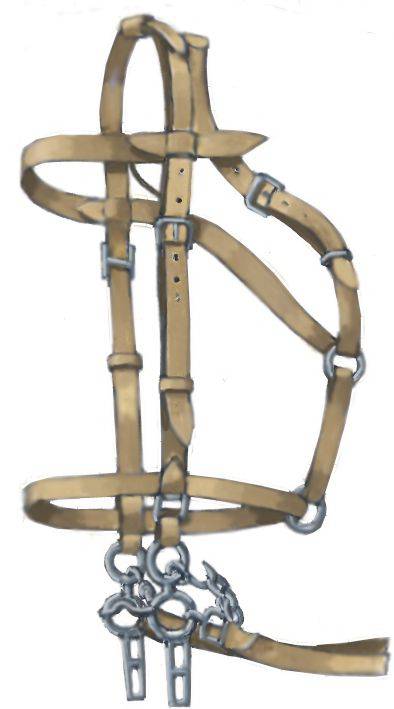
Horse equipment of the British cavalry.
Since the ideal for the Mahdists was the natural small-peasant way of life, they tried to eliminate the rent of land and failed in this. The poor peasants, who owned small plots, were not able to carry out work on land reclamation, to introduce improvements to them, so they were going to have too little harvest. Taxes levied on small-scale peasant farms could not cover the expenses of the state, and therefore the Mahdists had to accept the existence of large landowners.
The new government was able to bring the existing tax system into a relative order, in which only the taxes prescribed by the Koran remained, tax collectors established a solid salary (previously, the tax authorities received it as a percentage of the amount of taxes collected).
And yet it did not save Sudan, a country with a backward and closed economy, from disaster. Religious contradictions did not allow to establish friendly relations with neighbors. The trade, which was fully a state monopoly, almost ceased, and in 1888, it came to a cruel famine. Against the activities of the mahdists, discontent is again overdue. Against Caliph Abdullah, a conspiracy was unfolded, revealed in 1891 year. In the meantime, the territory of Sudan was completely surrounded by European powers and it is only natural that the British had a desire for a long-time failure to take revenge. And at the end of March, Egyptian and British troops marched from the border town of Wadi Halfa, 1898. Commanding the ten thousandth corps, General Kitchener, who moved south.
The heat and cholera in the first stage of the war were the main opponent of the Anglo-Egyptian troops. The city of Dongol was successfully taken in September, but all sorts of strategic and political troubles interfered with the beginning of the subsequent attack on the south. General Hunter, another army commander, won the city on the Nile Abu Amad in a fierce battle. This gave Kitchener the opportunity to link the important rear town of Wadi Haifa with the liberated Abu Amad by rail. The reinforcements of the Anglo-Egyptian troops, which were able to sharply intensify, went freely along this railway. Thanks to this, the forces of Emir Mahmud, the successor of the frantic Mahdi, were defeated on 8 on April 1898, under Atbara. A very hot, real African summer prevented an offensive deep into Africa. But when the heat was over, 26000 people (8000 Englishmen and 18000 Sudanese and Egyptians) Egyptian-British troops moved to the city of Omdurman - the heart of the country. The structure of the British troops included: Second Rifle Brigade, Second Artillery Brigade, First Grenadier Regiment, First Northumberland Rifle Regiment, Second Lancashire Rifle Regiment, 21 Ulansky Regiment. After the capture of the city of Aegeig 1 September 1898, they camped seven miles from Omdurman.
British artillery under Omdurman.
A part of the troops crossed the Nile and, with the support of the gunboats, covered Omdurman with five-inch (127-mm) howitzers with fire. Twin-screw guns “Melik”, “Sultan” and “Meih” were specially built for the Kitchener, which provided great assistance to the ground forces. By the way, “Melik” has survived to the present day and today stands on the bank, near the Presidential Palace in Khartoum, dug into the ground on the waterline.
Later, other units joined the advanced units. These were riflemen from the Camel Corps and the native Egyptian cavalry. British departures from the Jebel Surgan hill looked with amazement at Mahdi's tomb destroyed by shells, crowds of dervish fanatics who were built in a line not far from them. The medieval army is the most real: the battle of the drums, the roar of pipes and horns, under this cacophony before the English, horsemen in chain mail, helmets and shields were built into battle order, while the infantrymen waving the antique museum weapons. This unique sight was seen by a young hussar, Winston Churchill, heir to the Duke of Marlboro family from the 4 hussar regiment, assigned at that time to the 21 th Uhlan regiment. Everything he saw in his book “The River of War” he described as follows: “Suddenly, a solid dark line resembling zerib (thorny shrub) began to move. It consisted of people, not from the bushes. Behind this line, a huge mass of people flooded the crest of a hill: and while we were watching, fascinated by an extraordinary spectacle, the face of the slope darkened. Four miles from start to finish ... this army moved extremely fast. It seemed that part of the hill was moving. And between these masses riders continued to gallop. Thousands of troops behind them flooded the valley. Hundreds of banners were fluttering ahead, and the sun, reflecting on the tips of enemy lances, created a sparkling cloud. ”
The advanced units of the British immediately received an order to retreat, and the commanders executed it, redeploying troops to spend the night at a safe distance.
It is important to understand that if the army of Caliph Abdullah continued the attack that night, then the military campaign could have a completely different ending. The modern armament of General Kitchener's troops in the dark would be useless. The use of ten-shot rifles "Lee-Metford", machine guns "Maxim" and rapid-fire field guns in the dark would be very difficult, and in the night battle the British could lose enormously. Mahdists, (and according to various sources there were from 40 to 52 thousands), even if practically unarmed, having spears and swords could have superiority. And the 3000 of scattered camels would have caused panic. Alas, the Mahdists did not dare to attack the night, but in the morning it was not the courage of the native soldiers who decided the outcome of the victory, but the superiority of the modern weapons of the British.
British small arms.
2 September 1898 of the year early in the morning around 6 hours the first shot was fired at the battle of Omdurman, or as it should have been called initially - at the Battle of Khartoum. At this time, the first ranks of the Caliph's forces rushed across the English through the Kereri. The military order of the Mahdists formed two columns: on the left flank of the British, the warriors under the Green and Black Banners moved on the attack. Closer to the British banners were the Black Banners, which were literally swept away by rapid-fire weapons (howitzers, machine guns, Lee-Metford rifles). The Mahdists failed to approach the Anglo-Egyptian troops closer than 300 yards!
The English Maxim machine gun, which was in service with the British army in 1898 year and used in the battle of Omdurman.
On the right flank of the British, the Green Banners occupied the Kereri hills and thus forced the Camel Corps and cavalry located there. Two hours after the start of the battle, General Kitchener gave the Ulan regiment to the 21 to attack the dervish troops on the right flank, and his order looked somewhat strange: “To cause them as much inconvenience as possible on the flank and, as far as possible, to close their way to Omdurman” . In the military unit that received this order, there were only ... 450 people!
All this time, the Mahdists conducted continuous attacks of Anglo-Egyptian troops from the front and from the flanks of the Kereri hills. There were two attempts at concentrated attacks, as on the right flank, but both of their attacks were repelled by the Sudanese brigade of General Hector Mac-Donald. Already in 9 hours, General Kitchener ordered the attack on the city of Omdurman. The right flank was occupied by the Camel Corps and the Egyptian cavalry, the left flank was occupied by Lewis's regiment, the center by the Wochop brigade and the MacDonald brigade.
Three phases of the battle of Omdurman.
As a result of these movements of troops, the 450 man of the 21 Uhlan regiment found themselves on the very flank, and, according to the received strange order, went on the attack. And here the Ulans faced an unexpected turn of events: a group of horsemen, led by commander Osman Dean, one of the few who knew the craft of war, hid in the dried-up Kor-Abu-Sant creek and attacked the British from ambush, chopping the enemy with swords and daggers, hacking horses and pulling riders out of their saddles. The British used the Ulan peaks according to tradition, but many, even without holding their sabers, opened fire on the enemy with rifles and revolvers. Preferred shooting from the "Mauser" and the young Winston Churchill. He managed to shoot four, and the fifth, the last - hit, like a hammer, the handle of his "Mauser" on the head!
Attack of the 21 Ulan regiment near Omdurman. Richard C. C. Woodville.
As a result of this fight 46 man was injured, 21 ulan was killed, more than 150 horses fled or were killed and injured. It was here and to other lancers that the times of saber fights had already passed, and they began firing carbines at the people of Osman. The Maxwell Brigade had by then cleared the Black Banner Hill. Also on the right flank of the enemy forces were defeated. For the occupying British army and its Egyptian and Sudanese allies, the path to Omdurman was now open.
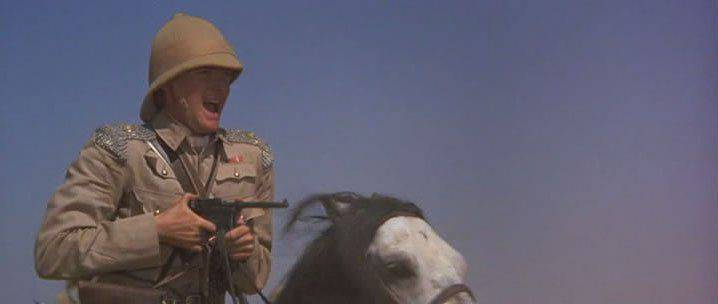
Young Churchill in battle. This event is reflected in the movie "Young Winston" (1972).
The losses of the mahdists in killed and wounded amounted to about 11000 people (although there are also sources that consider this number to be underestimated), the Anglo-Egyptian units themselves lost less than 50 people during the battle itself, but later 380 also died from their wounds!
General Kitchener was subsequently often accused of ill-treatment of the wounded, both by the enemy soldiers and by his own (in particular with the Sudanese people). They said that those who could not move were stabbed with bayonets or shot. But in many ways, such inhumanity was due to the fact that in the territories of the Mahdists the British army did not have the medical facilities necessary to care for the wounded. Therefore, priority was given to achieving victory.
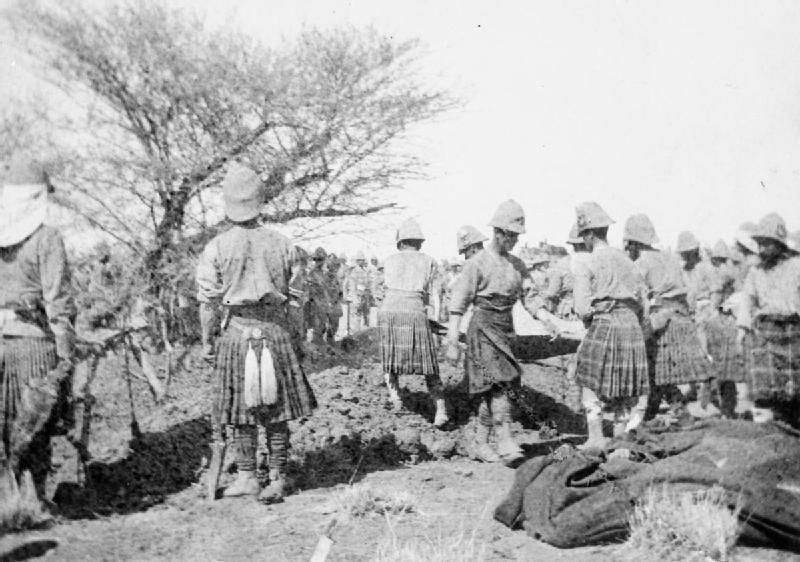
Scottish arrows from the regiment of the Cameron Highlanders and the Highlanders of Seafort dig their graves after the battle of Atbara. The Royal Arrows of Warwick and the Lincolns also participated in this battle; five officers and a 21 private were killed. The Egyptian Brigade lost 57 people. Losses of dervishes amounted to more than 3000 people.
With a handful of their supporters and remnants of cavalry, Caliph Abdullah left Omdurman. In the wilds of Kordofan, he wandered for about a year. His trail was discovered by the troops of Colonel Wingate, the future governor-general of Sudan. The emirs of the Caliph Abdullah refused the offer of his extradition, and instead simply ... killed him. Under the guise of a condominium, i.e. Anglo-Egyptian condominium, the colony of Sudan became part of the British Empire.
Armor of the Sudanese rider of the late XIX century. The Higgins Arms Museum, Worcester, Massachusetts.
The national hero returned to England, General Kitchener. He became a fashionable writer and famous journalist Winston Churchill. And the battle of the last knightly cavalry was soon forgotten!
Fig. A. Shepsa
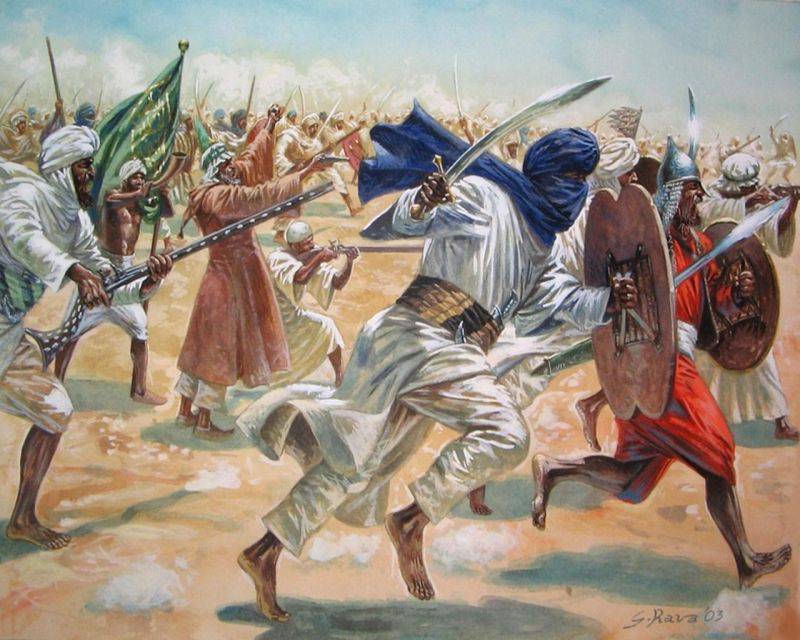
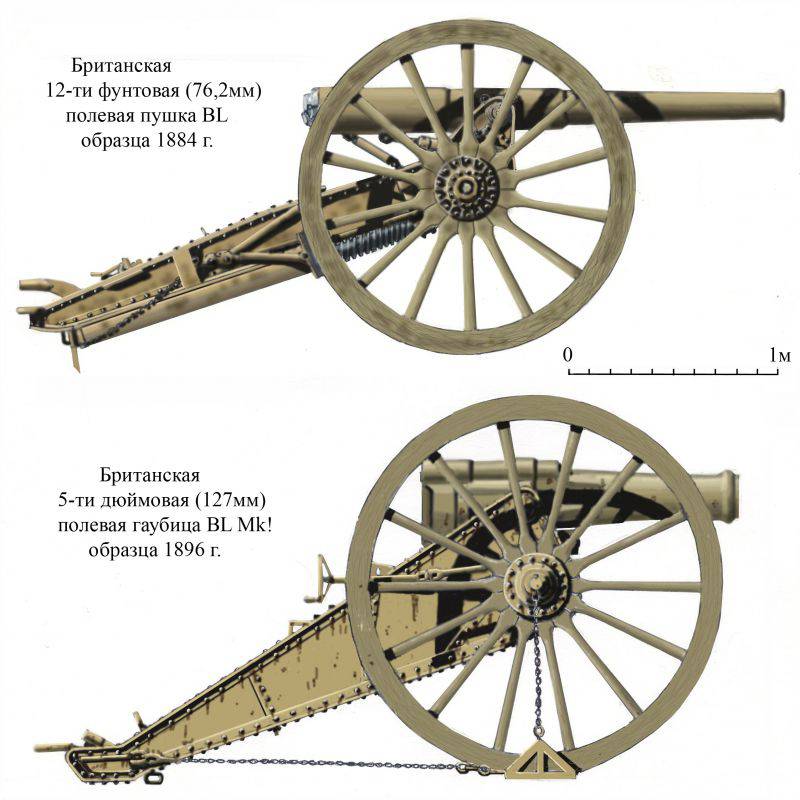
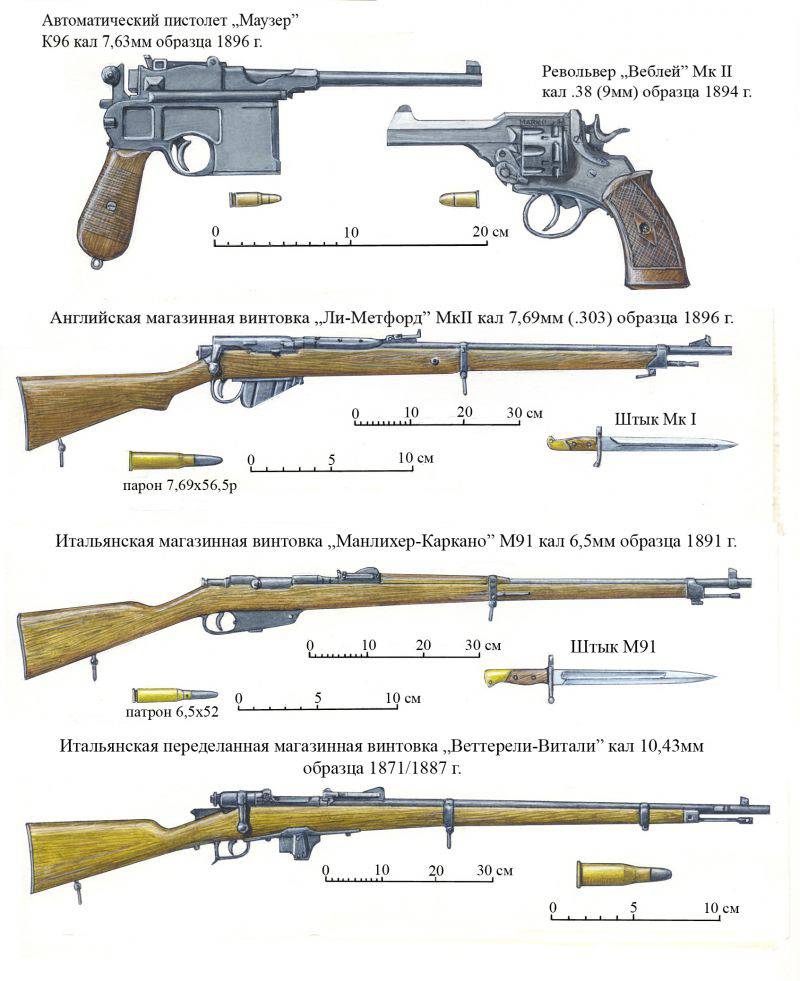
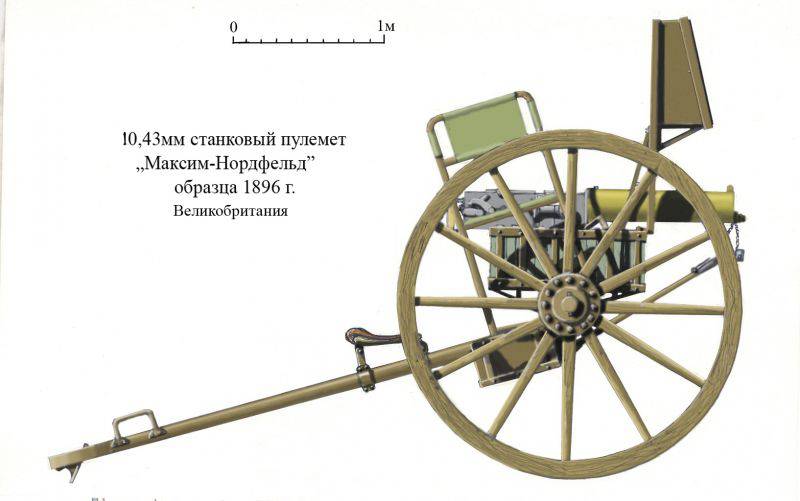
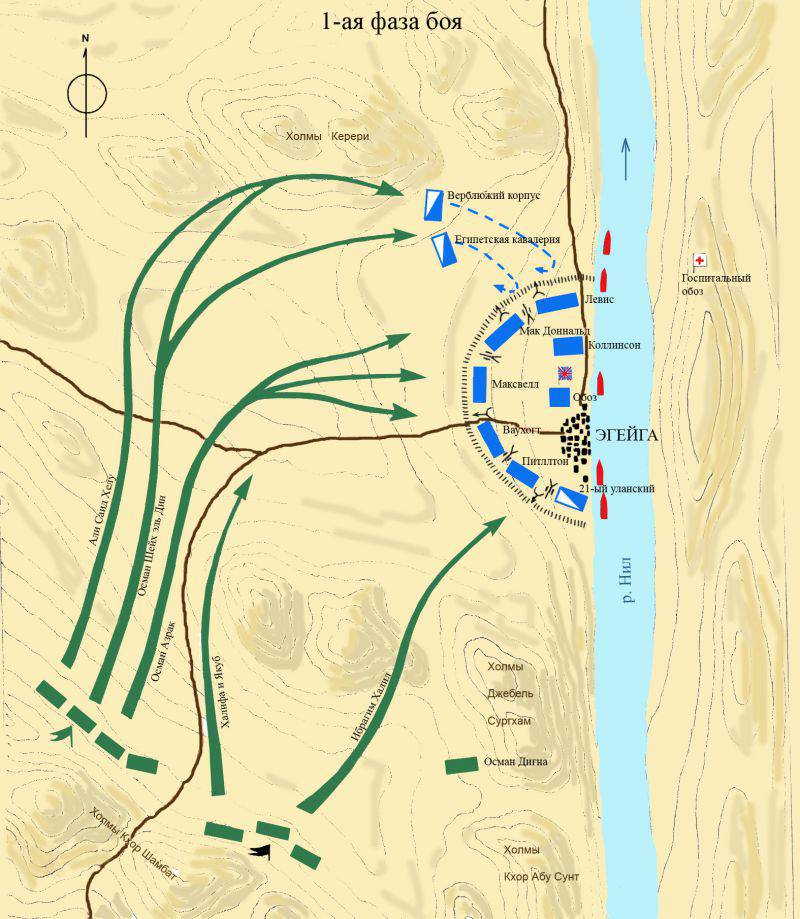
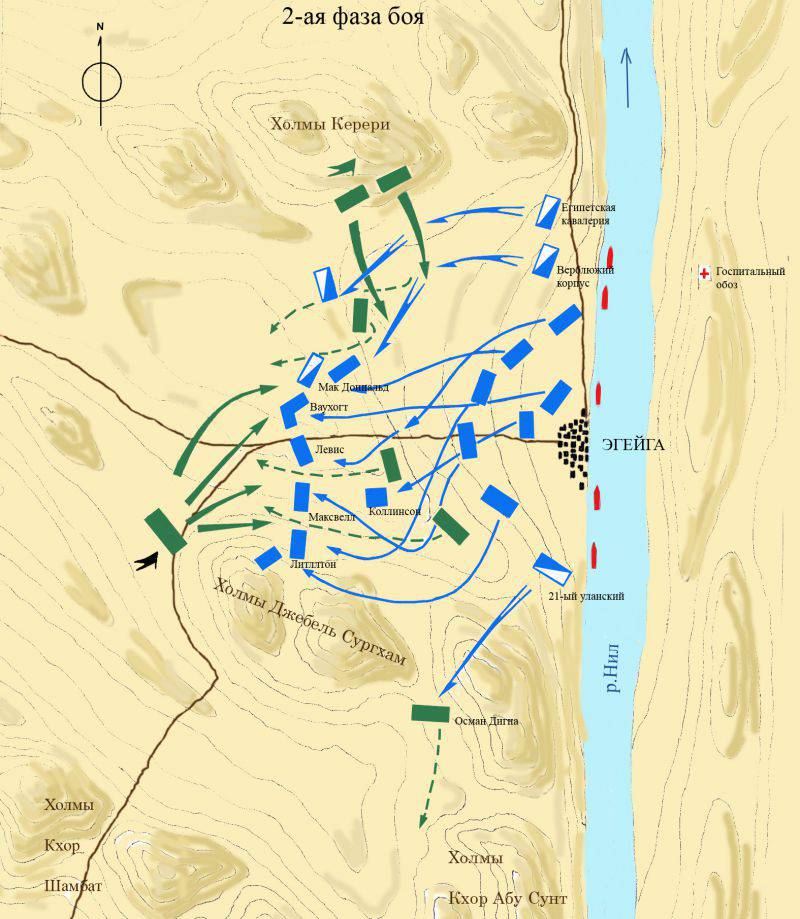
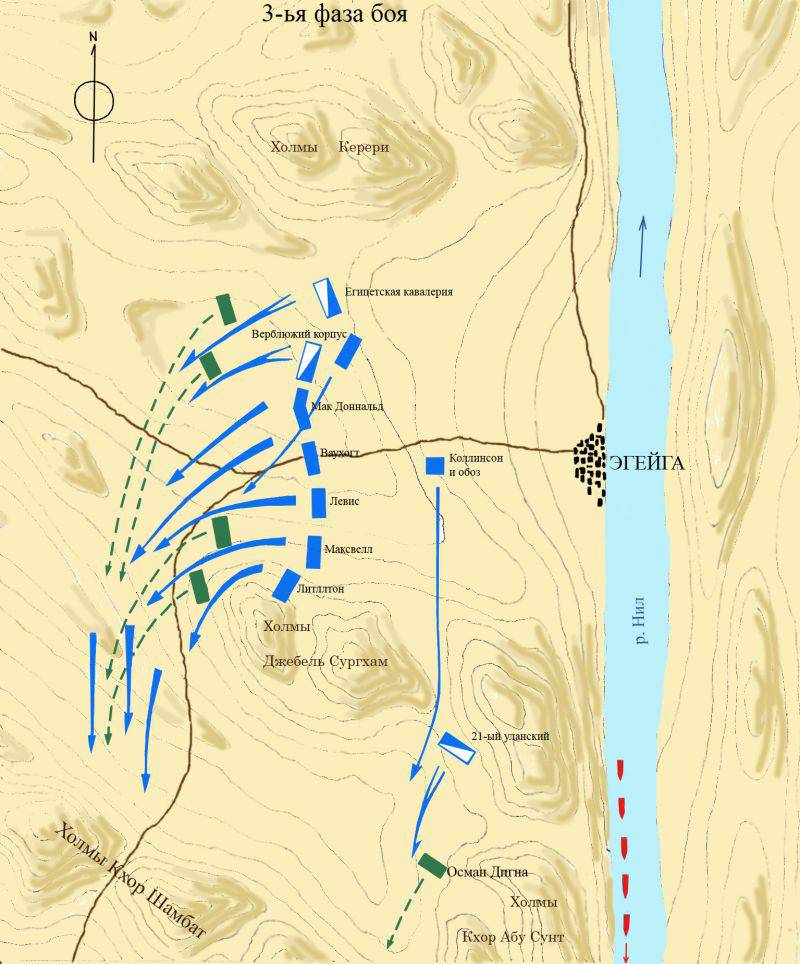
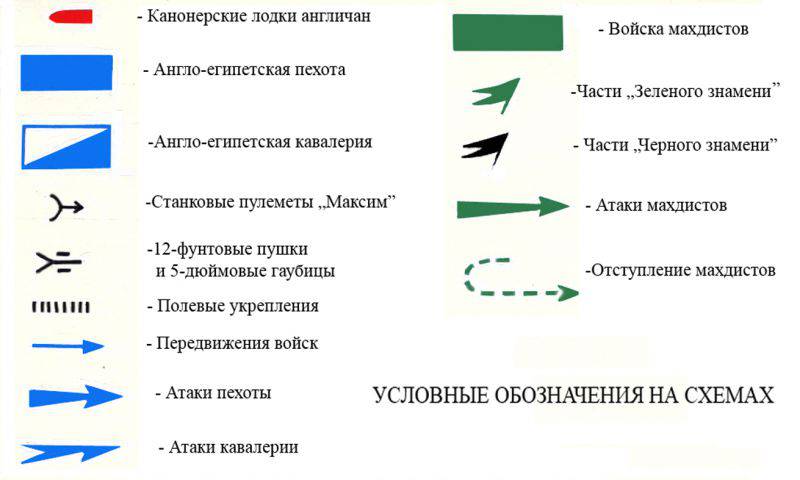
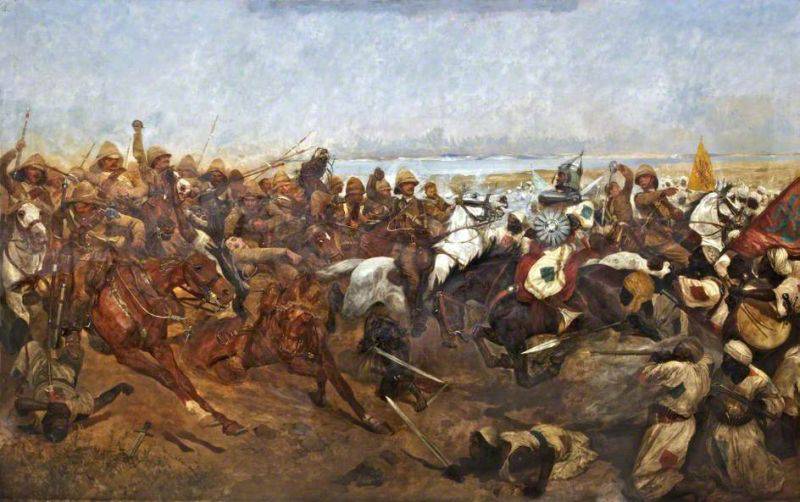
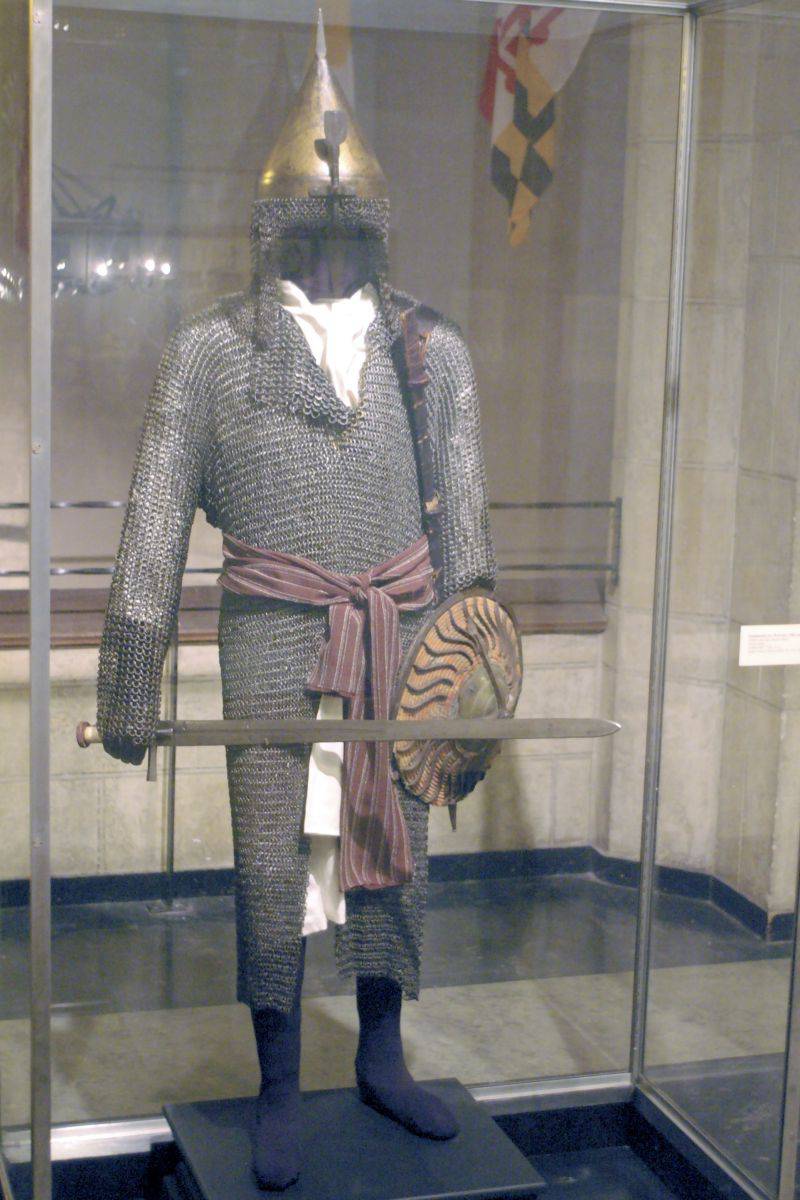
Information